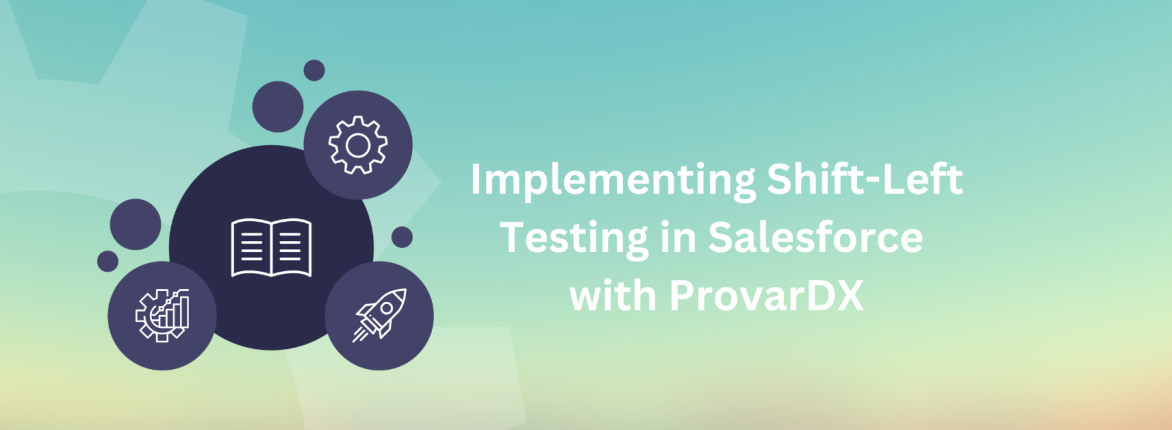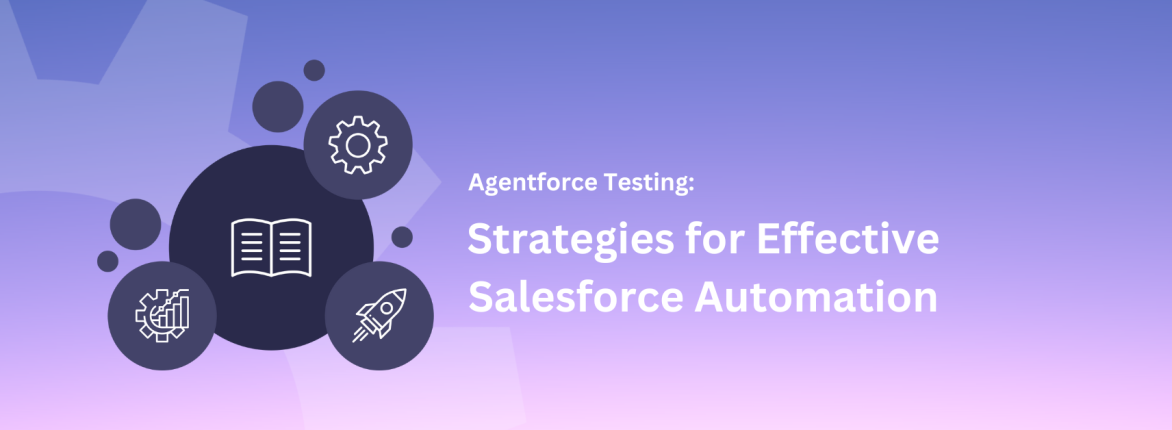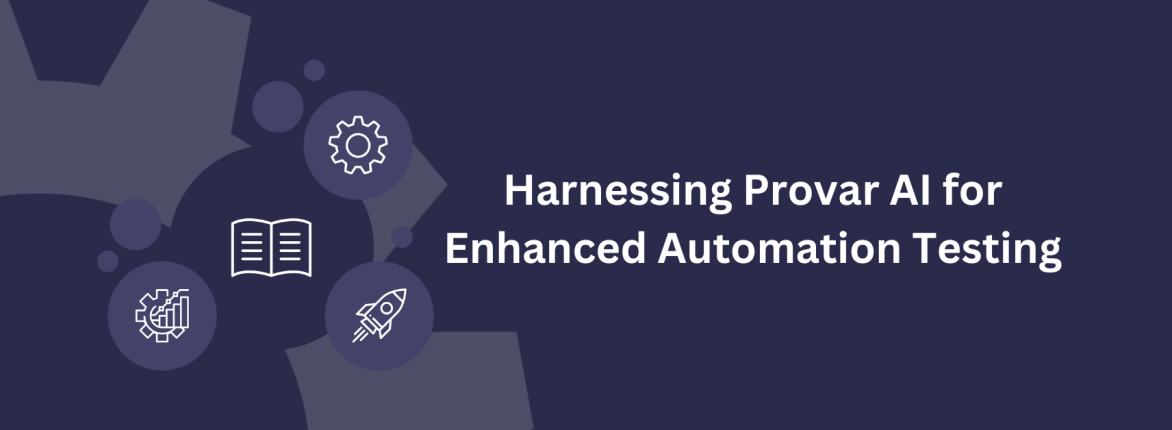Provar provides continuous learning opportunities, making testing Salesforce easy for nearly a decade. A crucial part of Provar’s future is our focus on continuing to scale innovation in our solutions and leaders. In our latest community conversation, Tara Walton, Technical Community Specialist, interviews Robin Gupta, the new Associate Vice President of Innovation at Provar.
Before coming to Provar, Robin Gupta spent his career building teams and solutions at AthenaHealth, Ace Turtle Services, Happiest Minds, and Accenture. He is active in the open-source community as the creator of TestZeus, a UI test automation open-source solution for Salesforce. He has been a member of the Selenium Conference and is an active member of multiple Salesforce user groups.
In our interview with Robin below, learn key strategies for innovating your teams and testing practices while getting inspired to build your open-source solutions.
Tara Walton:
Welcome to Provar, Robin Gupta. We are so very excited to have you on board. Many questions and topics of discussion have been submitted to us, and I would love to go over some of them with you.
This first topic about innovation is probably my favorite question because I follow Kelsey Hightower, the principal engineer at Google Cloud, on Twitter. Kelsey states, “Innovation is the act of doing something new that has never been seen before. It’s not what most organizations are struggling with. And most organizations have trouble getting anything done.”
As a creator yourself, what can teams do to better their execution and scale innovation further?
Robin Gupta:
That’s a tricky question, but it has a simple answer. The answer lies in planning. What you asked was interestingly divided into two parts: how do we get things done? And two, how do we innovate and invent new stuff? That is one of the critical problems massive successful operations have struggled with…we’ve had the Kodak and the Nokia of the world, which were doing great in delivering features and getting stuff done but not inventing or reinventing the wave. But to attack that, one has to plan for it.
New people can follow the 70/30 to keep it simple. 70% is focused on product delivery. And the remaining 30% of the effort goes to capacity, idea generation, and innovation.
It all lies with planning and prioritization. Delivery is essential, and people have issues getting stuff delivered. They need to push it, plan better, add the right people for the right job, and then focus on innovation.
Tara Walton:
We couldn’t agree more about how organization and planning are key to successful innovation delivery. You also created TestZeus. What inspired you to create an open-source framework?
Robin Gupta:
Once upon a time, I used to think, “I’m good at Selenium,” but when I was introduced to Salesforce years ago, we automated many test cases. Interestingly, it was the Winter ’20 or ’21 release. Whatever we automated, all those test cases broke because Salesforce pushes out releases twice a year, and then they have minor patch updates here and there. I didn’t know that, and whatever we had built didn’t run.
Then, I started going deeper into the platforms. I realized that Salesforce has these brilliant APIs, which we use, consume, and have a more intelligent framework for, a little bit smarter than just vanilla, basic implementation. So that inspired me to conceptualize the whole idea, implement it, and see how it worked. If it helped us, why won’t it help the testing community? And that’s how that whole thing got implemented. And I thought nothing could be better than open-sourcing the code. So that’s when I made TestZeus.
Tara Walton:
What was the most challenging part? Was it the breaking all the time that drove you to try to tackle that problem?
Robin Gupta:
Correct…every time Salesforce does a release, you’ve got to run that test, not just to fix them but also to certify the platform, the CRM, or whatever piece we are implementing. That was one of the key drivers.
Tara Walton:
That’s how Provar got started, too! It was that frustration of everything breaking, and there had to be a better way. Right?
Robin Gupta:
Yeah. Correct.
Tara Walton:
I love that. And you mentioned using the API. I think many of us who work in automation focus so much on the front end. What brought you to think about the API side of things?
Robin Gupta:
That’s a fascinating question. When I scroll through LinkedIn or some of these social networks, I see posts about Selenium implementation, XPath, and UI automation. But people, a lot of times, miss the bigger picture. People should look at any system, whether it’s Salesforce, Oracle, Workday, or even homegrown platforms, as an entire architecture. People generally look at them as a website with some HTML, and we should go to do clicks.
I even followed that design pattern, but then I realized that we can only engineer the test automation framework if we look at the whole engineering architecture. And that’s what drove me to the APIs. I thought…let me pop the hood and see what’s happening with the APIs. Can we use them? And we can.
Tara Walton:
Once I finally found APIs, it was like playing with a new toy…Do you feel the same way?
Robin Gupta:
And you will never go back to using UI automation.
Tara Walton:
It’s true. Once you find the other side, it’s just this complete picture, and suddenly, it clicks together. Is that how you felt?
Robin Gupta:
Exactly. The dark side, if you will.
Tara Walton:
I love that. How does continuous testing play a vital role in authentic DevOps culture, in your opinion?
Robin Gupta:
I had a very close head of DevOps in one of the previous organizations, and he had this quote: “Continuous delivery without testing is just continuous delivery of bugs.” So CI/CD has to have this third leg, CT, and continuous testing.
If we are not testing what we are doing, maybe daily deployments or twice-a-day deployments every month, we are just deploying bugs.
You never know when they’ll come back and bite us. Interestingly, it is not just us, the development team, who deliver features on Salesforce. Salesforce also does, and there’s much magic behind the curtains. So CI/CD has got to have that CT element to it. Critical testing is paramount in such a hostile environment.
Tara Walton:
Continuous delivery without testing is continuously delivering bugs. I think that’s gold.
Robin Gupta:
Correct.
Tara Walton:
I know it’s tough to get continuous testing for the grand scheme. What advice would you give to innovators looking to create solutions to bring that level of value and quality to their teams?
Robin Gupta:
Okay. Let’s attack that at the big-picture level. Innovation could be one element, but we can break it into these three parts or a triangle. So people process in technology, and often people look at innovation as, I’ll find some goldmine of this tech stack, which will improve everything. It doesn’t work like that. And also when people undermine the importance of people and processes in that triangle, which I mentioned. So it’s the PPT: People. Process. Technology.
And innovation can happen overnight. It could be one golden sparkle of thought, but if we have to list the whole process, we should look at the bigger picture and the patterns we’ve been following. Innovation can only happen when we break some of those patterns. If we keep focusing on the features, we have great features but not innovative ones. So looking at the backlog is good, but just taking a step back, looking at the bigger picture along the lines of people, process, technology, seeing the trends and patterns, and then trying to make maybe one-inch moves in small increments can push the whole thing forward by a lot.
Tara Walton:
I love that. I can imagine it would be easy to be overwhelmed when trying to come up with something new and never seen before. So, what would you tell somebody who wants to be creative and innovative but gets overwhelmed?
Robin Gupta:
I used to get overwhelmed a lot, and once you start thinking of something and passionately think about it, your brain will start shooting ideas like, can we do this? Can we do that? Sometimes, I would stop my car and take notes on my mobile. The easier way is to carry a notepad and a pen whenever you work. You can be old school or use OneNote, Evernote, or whatever fancy note-taking app you have. Just jot the things down.
That’s phase one, and phase two is not acting on them. Just sleep on them, and the following day, review that list. Your brain will automatically distill a lot of that. And you’ll see at the top one or two things you can follow. The idea is not to spread yourself too thin on ten ideas, and 50 cups of coffee later, you are like, “Oh, why did I do this?” Right?
Tara Walton:
How do you balance your innovation and personal life, day-to-day work, and actual work tasks? Usually, when you sit down and create something new, like TestZeus as a passion project, it’s outside your 9:00 to 5:00 daily job. So, how did you balance everything?
Robin Gupta:
Yeah. So this is something, again, one of my mentors earlier in my career told me. “Robin Gupta, you’ll be juggling balls when you grow older. And as you grow older, you’ll get more balls to juggle. So you’ll have a family, you’ll have a job. You’ll have some passion projects. You want to have coffee with friends, and so on, but again, the key is prioritization and organization.”
I like to divide my work into chunks. I also block some time with myself on Fridays from 1:00 to 2:00 PM, ISD, or something like that. No meetings, no nothing. Again, my notebook prioritizes what must be done the following Monday or week. Friday evenings are generally booked for the family unless I’m mentoring others or meeting someone important outside the family. And then, in addition to that, if I get some ideas, like TestZeus, or if I’m contributing to open-source or a conference, Saturday nights and Sunday nights are reserved for that. So make a big cup of coffee, open the laptop, and get coding.
Tara Walton:
Coffee creates code, right?… I had a college professor who said, “If you want good code, make good coffee.” So I know as a QA and recovering automation developer when looking for tools. I never got so brave as to try to create my own, but when you’re trying to pick up a new tool, pricing can be the difference between using the tool that would be best for the job and the tool that you can access and convince your boss to pay for. So, do you have any advice on how to make the best of a situation like that?
Robin Gupta:
Yeah, definitely. So, over the years in my roles, I have worked with automation and process automation like RPA, low code, and no code to some extent. I realized that people are very price-sensitive, specifically in the EMEA, Asia Pacific, Southeast Asia, and other regions. They tend to look at the short-term answer. “Is it possible to do it for free?” Can we build it on our own? Can we use this low-cost option? It’s not pricey, but they tend to miss out in the long run. There are repercussions.
Maybe what is low cost is actually not low code, and it’s as good as coding it on your own, or maybe it could have maintenance issues. So many tools out there promise Salesforce automation, but interestingly, they don’t optimize it for Salesforce releases. And people look at the price angle or the cost and say, “Oh, we don’t need this. We will build it on our own.” One year later, they realized they should have caught the train to buy that tool.
Tara Walton:
Now you’ve lost a year of work and revenue…
Robin Gupta:
Correct. You’re just adding people to maintain your code base. So, long story short, cost should be one, but not the defining, angle when doing a buy versus build analysis. There should be other pieces. What’s the forecast for the number of resources we lead or the amount of maintenance that will be done? How low is code? How low is it on the low code spectrum? Costing should be one, but not the defining one.
Tara Walton:
That’s good advice. I know I’ve struggled with it throughout my career. I have written API frameworks more than once, but never quite the same caliber as TestZeus. So I’m the person who says, “Nope, that’s overwhelming.”
Robin Gupta:
Getting started is easy, but running with that car is tricky.
Tara Walton:
That’s excellent advice. I love the idea of keeping the big picture in mind and breaking it down into baby steps and a lot of planning. I think that’s usually the rush step, and it sounds like that’s where the focus should be.
Robin Gupta:
Measure once and cut twice, something like that, or measure twice but cut once.
Tara Walton:
That’s the one. Thank you for all of your advice. I’m excited to go back and start work on some of my side passion projects again because I lost a little grit while working on them, but I think I’m ready to sit down and do some more planning.
I enjoyed our community conversation about innovation. I hope we do this again soon, but thank you for taking time out for a take-two with me.
Robin Gupta:
Sure. Thank you so much.
Are you a leader looking for more ideas to innovate your Salesforce test automation with Provar, your software testing? Continue the conversation with Robin and Tara in our new Community forum.










